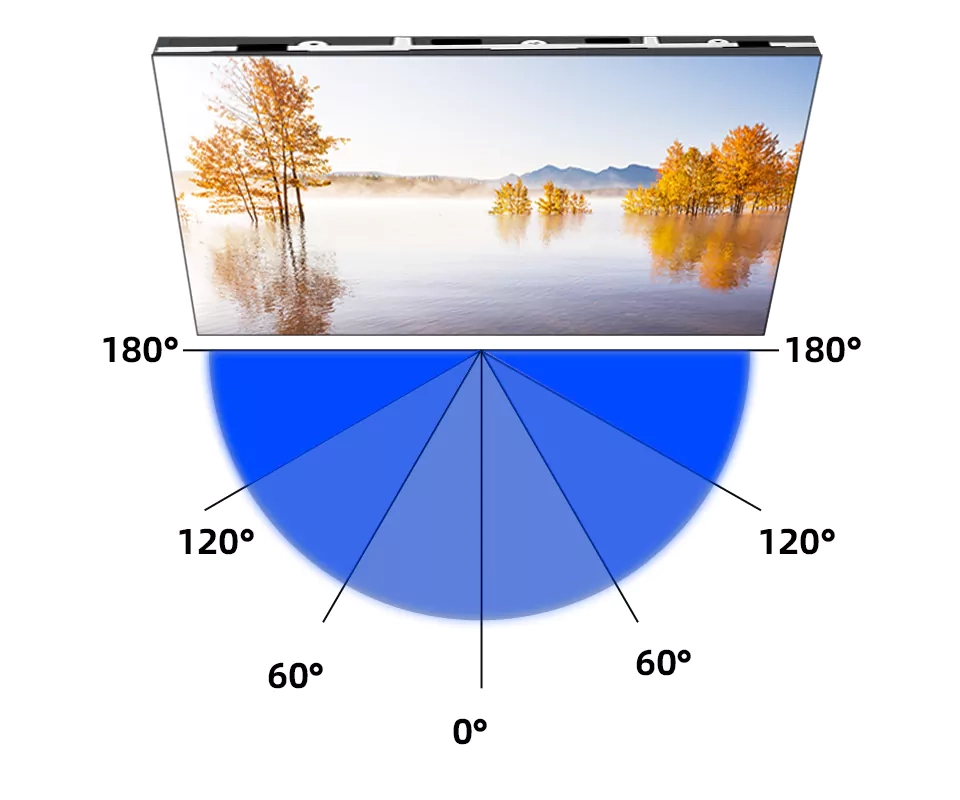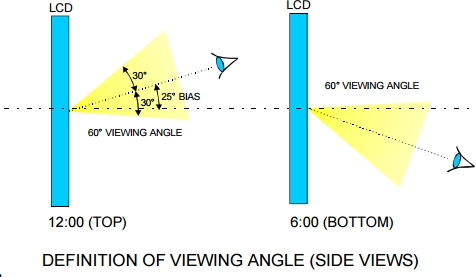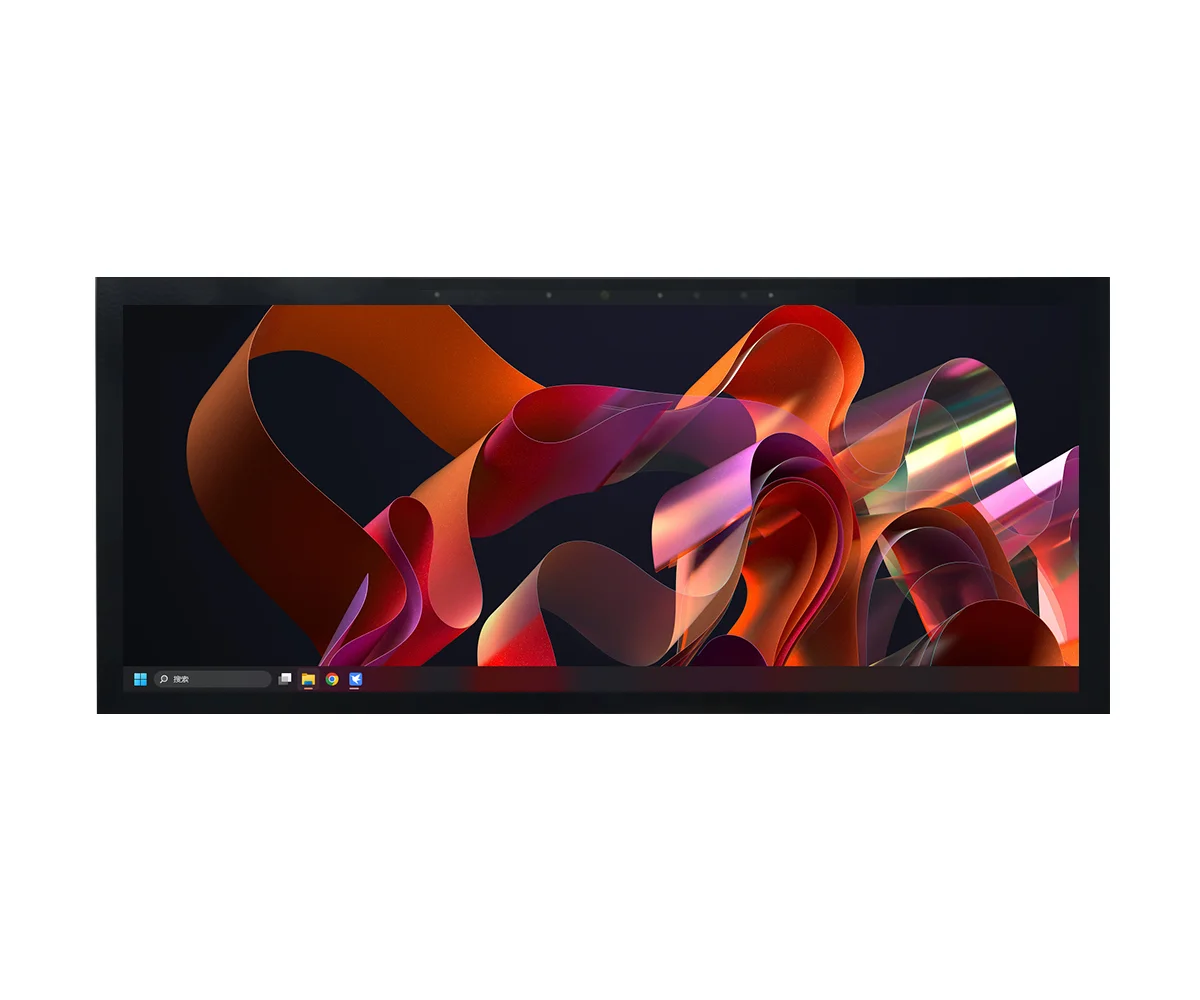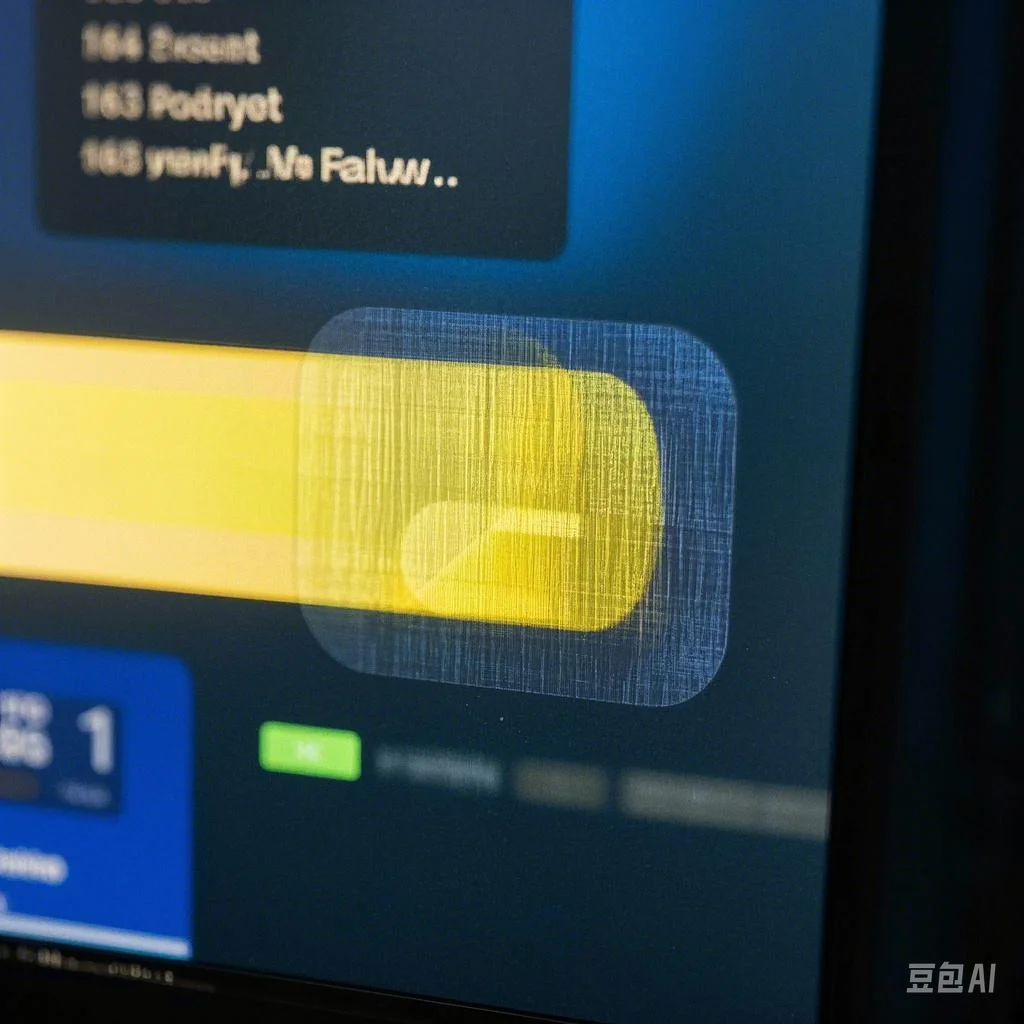Why Viewing Angles of LCD Displays Are Important in Industrial and Medical Fields
Explaining Viewing Angles: Horizontal vs. Vertical Sharpness
Viewing angles define how well an LCD display maintains its color accuracy, contrast, and brightness when viewed from different angles. This factor is particularly crucial in industrial and medical environments, where the clarity of displayed information can impact safety, efficiency, and decision-making. Unlike consumer electronics, where optimal viewing angles are designed for personal use, industrial and medical displays must accommodate multiple users and variable viewing positions.
In medical applications, displays are frequently viewed from multiple angles, especially in operating rooms, diagnostic imaging centers, and patient monitoring setups. A surgeon, an assistant, and a nurse must all see the same accurate visuals from different perspectives without distortion. Poor viewing angles can lead to color shifts, misinterpretations, or even diagnostic errors.
Likewise, in industrial workplaces, operators depend on control screens, factory panels, and human-machine interfaces (HMIs) to watch key systems. If the screen has weak viewing angles, workers might find it hard to see data from the side. This raises the chance of errors in operation. Unlike phones or TVs made for fixed viewing, industrial displays must stay readable in diverse lighting and sharp angles.
Industry-Specific Issues with Weak Viewing Angles
In medical uses, limits in viewing angles can create uneven color displays. This might lead to errors in reading diagnostic images. For instance, a radiologist viewing an X-ray on a screen with poor off-axis color might notice shifted tones. This can harm diagnostic precision. In surgery, where teams share screens, a tight viewing angle can cause visibility problems. Medical staff may need to shift positions often.
Industrial settings bring other difficulties. In factories, control panels are usually set at fixed angles. Workers must read them from various spots. A display with poor side clarity might be unreadable in dim light or under strong artificial beams. This poses safety risks. For example, an HMI in a chemical plant must stay clear even from an angle. This ensures fast and accurate data understanding.
Retail environments also deal with viewing angle challenges. This is true for bar-type LCDs in digital signs. Screens in shop windows or checkout areas must keep strong visibility from many angles to attract customers. If an ad or product info on a digital shelf tag fades or twists at an angle, it loses its effect and usefulness.
Main Factors Affecting Viewing Angles of LCD Displays
Panel Type: IPS vs. TN for Industrial Purposes
The kind of LCD panel greatly shapes viewing angle quality.
IPS (In-Plane Switching) panels offer the widest viewing angles, often up to 178°. They are common in medical screens, diagnostic tools, and team work areas where steady color from all views matters. An IPS panel ensures an X-ray looks the same whether a doctor, nurse, or tech sees it from the front or side.
TN (Twisted Nematic) panels, however, have slimmer viewing angles. Still, they are budget-friendly and used in industrial cases where safety and toughness beat multi-angle visibility. For instance, an HMI in a factory might use a TN panel. Its narrow angles stop unauthorized people from easily seeing private data.
Backlighting Options for Tough Conditions
In industrial and outdoor retail uses, bright backlighting is key to keeping screens visible. LCDs with backlights over 1,000 nits are critical for places with direct sun or harsh artificial light. For example, digital signs in outdoor shops must stay readable from an angle in bright daylight.
Edge-lit and direct-lit setups also affect evenness. In smart devices like fridges with touchscreens, direct-lit LCDs give steady brightness. This cuts visibility problems from shadows or reflections when viewed from different kitchen spots.
Anti-Glare Layers and Privacy Screens
Anti-glare coatings are vital in medical and industrial uses where strong lights can reflect on screens. Medical monitors in operating rooms often have matte surfaces to stop glare from surgical lamps. This ensures all staff get a clear, undistorted view of key data.
In secure industrial settings, privacy filters can purposely narrow viewing angles. This stops unauthorized people from reading sensitive info on control panels. It’s especially helpful in finance or security areas where only the person right in front should see the screen clearly.
How to Check and Compare Viewing Angles of LCD Displays
Industry Rules for Medical and Industrial Screens
Medical and industrial LCD displays must follow strict rules for steady performance. In medical uses, meeting ISO 13406-2 ensures screens keep high contrast and low distortion over wide angles. In industrial settings, NEMA ratings set the toughness and readability of displays in varied conditions, like extreme heat or moisture.
Hands-On Testing for Non-Consumer Uses
Copying real-world settings is crucial when testing viewing angles. In factories, lighting can differ. So, testing an LCD display under mock industrial lighting shows angle-based contrast changes. In medical uses, a colorimeter can measure precision from various angles. This reveals flaws that might affect diagnostic clarity.
Reading Manufacturer Specs Right
Makers often claim LCD panels have “178° viewing angles.” Yet, real performance can vary due to contrast drop-off. A top medical display should hold contrast at 80° or more without big color shifts. In retail, bar-type displays must keep brightness and contrast at wide angles to stay appealing to shoppers.
Improving Viewing Angles for Special Uses
Medical Displays: Matching Precision and Off-Axis Clarity
In surgery, medical screens must aid team efforts. Wide-angle IPS screens ensure many pros can view patient data at once without twists. Anti-reflective layers help reduce glare from surgical lights, boosting visibility.
Industrial HMIs: Toughness vs. Viewing Range
Industrial control panels often favor durability over viewing angles. Rugged TN panels last in harsh settings but may need custom diffusers. These improve readability from side angles in dusty or dim conditions.
Smart Devices: Building for User Contact
LCD displays in smart devices must consider user stance. A coffee machine’s touchscreen should favor vertical angles for users above it. Likewise, fridge touchscreens should use anti-reflection layers to stay clear under kitchen lights.
Retail Bar-Type Displays: Broad Angles for Customer Draw
Retail LCDs gain from curved shapes and anti-fingerprint coatings to lift user experience. High-brightness screens keep visibility from many angles. This ensures promo content stays strong across customer positions.
Advances in Viewing Angles of LCD Displays for Niche Markets
Hybrid IPS Panels for Medical-Industrial Mixes
New hybrid IPS panels blend wide viewing angles with high brightness. They suit both medical and industrial needs. These panels keep color true while boosting readability in sunlit settings.
Dynamic Viewing Modes in Smart Devices
Progress in smart devices now includes self-adjusting viewing angles. For instance, a fridge’s LCD screen might shift brightness and contrast based on room light. This ensures top visibility all day.
Tailored LCD Solutions for Exact Viewing Needs
Kadi Display focuses on custom LCD solutions for medical, industrial, and smart device uses. This ensures displays hit top marks in clarity, toughness, and anti-glare ability. For questions, contact Kadi Display at 0086-13662585086 or email Sales@sz-kadi.com.
FAQs About Viewing Angles of LCD Displays
1. Can IPS panels keep steady color accuracy at 170° for medical screens?
Yes, IPS panels hold high color precision across sharp angles, making them perfect for medical use.
2. How do anti-glare coatings affect viewing angles in industrial HMIs?
They boost readability in bright settings without twisting colors.
3. Are bar-type LCDs good for vertical viewing in retail?
Yes, but brightness and contrast must be tuned for max visibility.
4. What’s the least brightness needed for outdoor bar displays with wide angles?
At least 1,000 nits are advised for sunlight visibility.
5. Can TN panels be tweaked for better viewing angles in smart devices?
Yes, with advanced diffusers and custom tuning.












